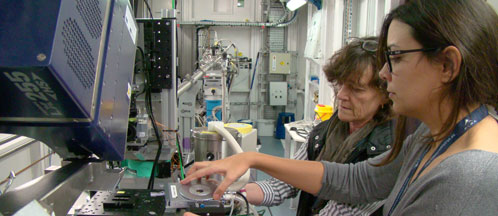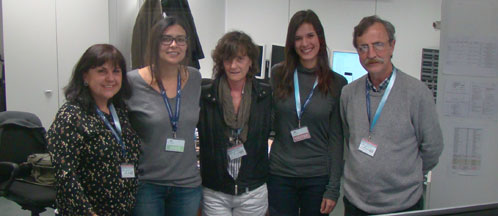Primarily used in gourmet products, the velvet effect comes from a chocolate coating that results in a smooth texture and refreshing mouthfeel. A research team from the University of Barcelona, along with chocolatier Enric Rovira, undertook a study to characterize the textures of the velvet effect in chocolate.
During the study, the University of Barcelona team characterized this type of texture by monitoring the crystallization and polymorphic transformation of cocoa butter crystals using different heat treatments and by analysing the possible template effect.
Crystallography has shown that it is the V shape of cocoa butter crystals that gives chocolate its shine and an appropriate melting temperature in the mouth. This shape is obtained by means of tempering, a process of cooling and heating the chocolate.
"In the study, we characterized the size of the V-shaped cocoa butter crystals in velvet chocolate and we found that they are much smaller than those in normally tempered chocolate. Additionally, these smaller crystals melt at a slightly lower temperature, which results in a smoother chocolate and a fresh feeling," explained Laura Bayés, a researcher from the UB's Faculty of Geology and the lead author of the study.
To determine the polymorphic shapes that make up the velvet coating, several experiments were conducted in the non crustalline diffraction beamline at the ALBA Synchrotron. The goal was to obtain diffraction patterns of the samples during a heating process going from 5 °C to 40 °C, as every polymorphic shape melts at a different temperature. "Through this experiment, which allowed us to complete each analysis in seconds and achieve higher resolution, we were able to determine that velvet chocolate is made up only of V-shaped crystals, just like tempered chocolate", said Teresa Calvet, a researcher with the Crystallography GRC.
Meanwhile, the mechanism of crystallization and the polymorphic transformation of the cocoa butter was monitored at the X-Ray Diffraction Unit of the UB's Scientific and Technological Services (CCiTUB) by modifying the temperature of the underlying layers. The results showed that crystallization and the subsequent transformation into the V shape occur only when surface temperatures do not exceed 16 °C.
In order to see the surface structures of the velvet chocolate, scanning electron microscope techniques were also used in cryo and confocal interferometric conditions, both of which are available at the CCiTUB.
A team from the University of Hiroshima who conducted ground-breaking work in the use of synchrotron light to analyse chocolate also participated in the study.


Left, researchers from UB prepare the sample at the NCD experimental hutch. Next, the UB research group.




